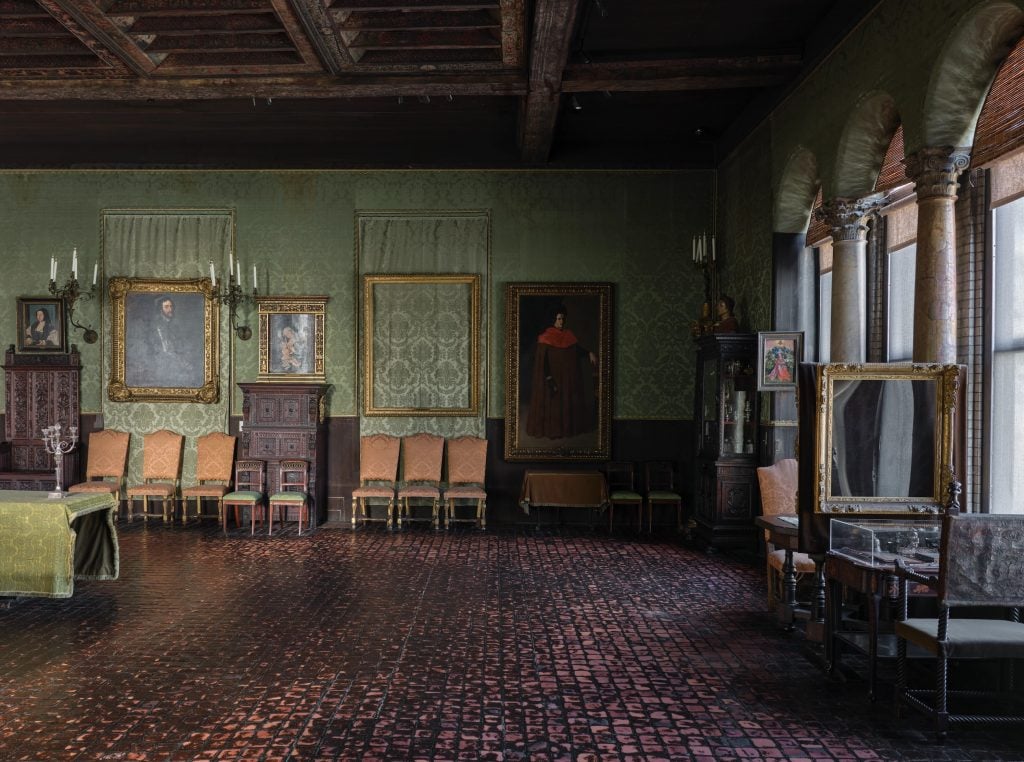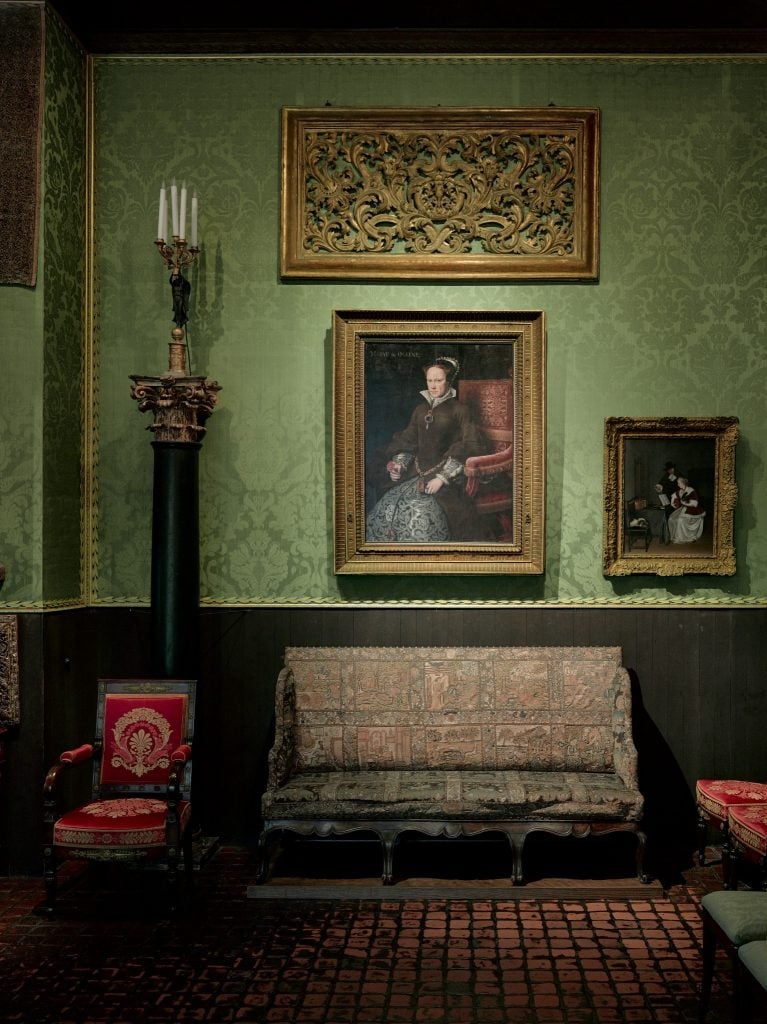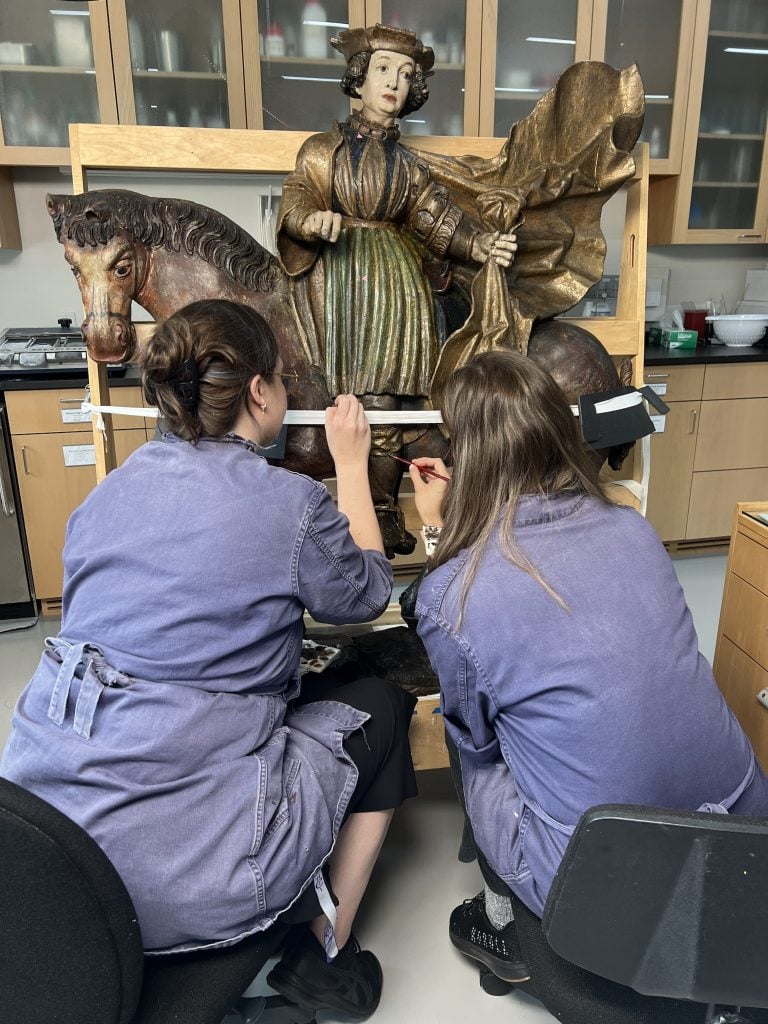Museums & Institutions
Gardner Museum Is Renovating the Room That Witnessed a Notorious Heist
From floor tiles to Italian painted ceiling, the restoration will largely take place in public view.

From floor tiles to Italian painted ceiling, the restoration will largely take place in public view.

Artnet News

An ongoing restoration project at Boston’s Isabella Stewart Gardner Museum is embarking on its final major leg. What the museum calls the Dutch room, home to canvases by Rembrandt and his contemporaries, will soon undergo restoration and conservation work, including not only paintings, frames, and sculptures, but also furniture, wall fabrics, and much more. The project is estimated to be complete by the end of 2026.
Museum visitors won’t lose the opportunity to view the artworks in the room, and in fact they’ll get to watch conservators at work, as the gallery will remain open.
“Isabella Stewart Gardner’s conception of her Dutch Room captures all the hallmarks of her unique and groundbreaking curatorial approach: an intimate setting suggesting a domestic environment; groupings of objects of different types, times, and places to show thematic connections, and her faith in the visitor to create their own interpretations and experience,” said museum director Peggy Fogelman in a statement.
The Gardner is known worldwide not only for its artistic treasures but also for the largest museum heist of all time. On March 18, 1990, thieves posing as police entered in the middle of the night and made off with 13 artworks valued at $500 million. They have never been recovered. Six of them were taken from the Dutch room, including the sole seascape by Rembrandt; four large empty frames remain on view, in hopes that they will one day be rejoined with the canvases.

Dutch Room, Isabella Stewart Gardner Museum, Boston (2023). Courtesy of the museum.
The restoration work will stretch from the historic terracotta floor tiles to the 16th-century Italian painted ceiling. Inspection of the ceiling revealed hundreds of mythological scenes, as well as some degree of later censorship of nude figures. Museum staff are faced with a decision: whether to reverse the censorship and reveal the nude figures or leave them bowdlerized as Gardner herself saw them.
Other historical choices will definitely be reversed. Since the 1950s, the walls have been lined with a single-pattern green upholstery; the renovation will include a reproduction of some 10 different textiles that once covered the walls. Yet other aspects of the restoration are made possible by evolving technology: the museum will also install a new energy-efficient lighting system. Also on the punch list is furniture including 14 Venetian side chairs dating to the 18th century.

Conservators treat the 16th-century German sculpture Saint Martin and the Beggar in the conservation lab, June 2024. Courtesy Isabella Stewart Gardner Museum.
Paintings to be studied and conserved include Peter Paul Rubens’s portrait of Thomas Howard, Earl of Arundel; The Music Lesson, from the workshop of Gerard ter Borch the Younger; and The Dauphin, François D’Angouleme after Corneille de Lyon. What’s more, The Music Lesson, which, after hanging for years in a replacement frame, will be returned to its original frame, recently rediscovered in museum storage.
“In approaching a restoration of this scale, we look at the room holistically, the same way that Isabella did, assessing every detail from floor tiles to ceiling coffers and lighting,” said Holly Salmon, director of conservation, in a statement on the museum’s website. “It’s a very ambitious project but we are fortunate to have a talented team using both traditional techniques and advanced technology to realize the vision our founder had for this gallery.”